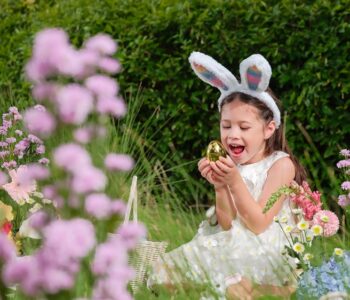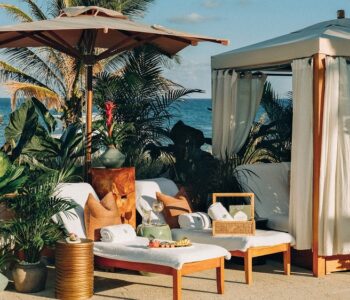An archival Black & White photograph dated 20 September, 1906, depicts a transport boat, part of the naval forces of the Sixth Military Expedition of the Royal Dutch East Indies Army, anchored offshore of Sanur, Bali. Colonial machines of war, equipment, soldiers, and horses disembark into landing vessels bound for Padang Galak beach.
Naval artillery had previously pounded Denpasar as the Dutch forces sought to assert control over southern Bali. Upon coming ashore, the invaders journeyed inland, encountering fierce local resistance. They eventually arrived in Kesiman, east of central Denpasar, and the site of Puri Badung, the royal palace of Badung. What occurred later that day, Puputan Badung, stands as one of the most significant events in modern Balinese history.
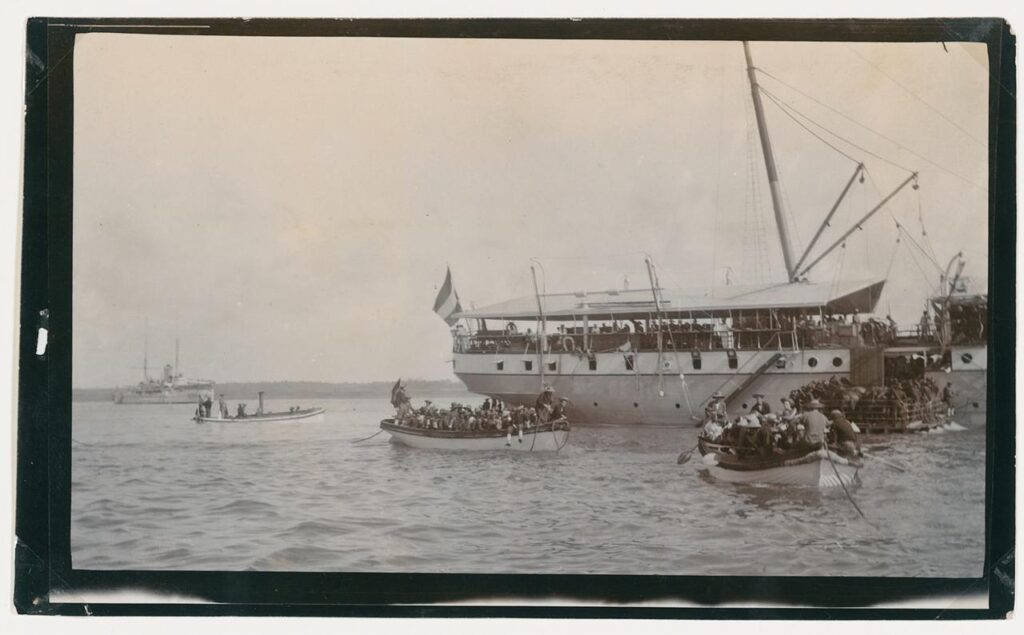
The photograph is the subject of a painting titled, ‘Sanur 1906‘, by Balinese contemporary artist Agung Mangu Putra, who was originally trained in graphic arts and design. For over a decade, he has been exploring ideas in a series of historical compositions, researching critical Dutch colonial events that shaped Indonesian and Balinese history over a century ago. The victors always record history; the stories are described from a single viewpoint, often missing relevant aspects that describe a more informed picture of events.
Mangu Putra seeks to question the colonial narrative by shining light upon past events, attempting to counterbalance the prevailing viewpoint. This effort aims to inform the Balinese about aspects of their history that are often overlooked or unexplored. Dutch colonialism has shaped the global narrative and impacted upon the complexities of Balinese identity. It is essential to develop fresh narratives from the Balinese perspective to provide a more inclusive and accurate portrayal of the past.
“Photographs contain layers of narratives, and within these there are always hidden meanings that I am driven to delve into,” Mangu Putra shared in a 2016 interview, when discussing his exhibition ‘Mangu Putra: Between History and the Quotidian’ in Singapore in November of that year. This exhibition marked a milestone in Balinese art, as it was the artist’s first presentation of his historical series and brought colonial history under scrutiny in a unique and meaningful way.
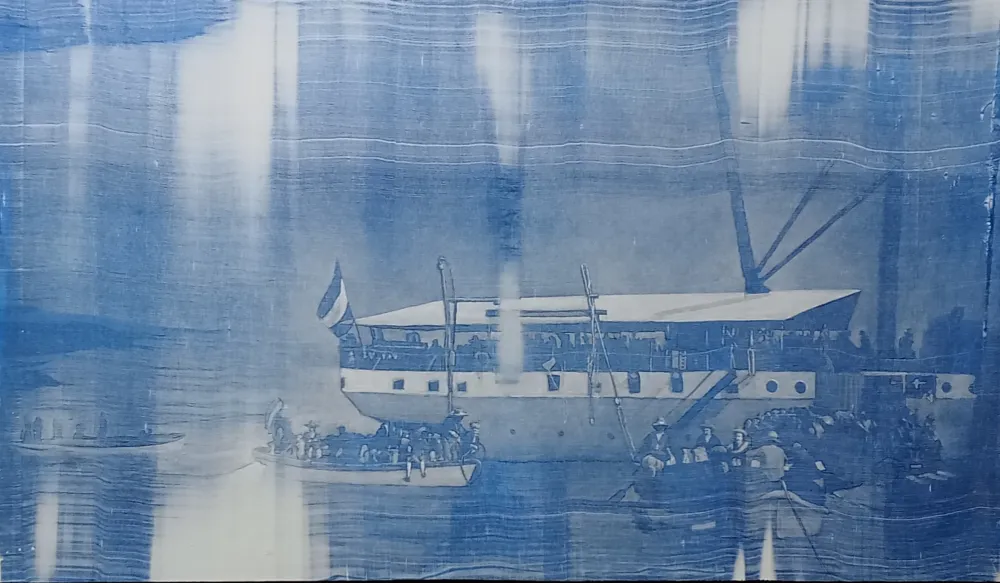
The artist begins his composition with layers of acrylic paint to build the background. The ship and smaller vessels are then sketched and painted in. Mangu Putra applies blobs of white paint to the canvas and uses a large rubber blade, similar to screen printing, to draw the paint across the surface. Finally, select human figures are highlighted to complete the picture.
Mangu Putra’s career began in advertising before he transitioned to fine arts. His understanding of composition structure is enriched with ideas and methods beyond conventional painting. While brush and palette knife paint application allows for meticulous control, Mangu Putra’s use of printing techniques represents a daring, experimental shift. By embracing this method, he relinquishes control, inviting unseen creative forces to shape the aesthetic outcome.
Sanur 1906, presents a captivating blend of abstract elements and more clearly defined representational imagery, a fusion of known and understood information with that which is mysterious. The abstract components are depicted through horizontal, wavy blue and white lines etched into the acrylic medium and white flashes that emerge from both the top and bottom of the composition, converging towards the center of the painting.
By highlighting the figures at the boat’s bow in the right foreground of the composition, Mangu Putra introduces a compelling human aspect to the painting. We identify with the characters and become familiar with the painting’s narrative describing the landing craft venturing in open water towards the beach. We may imagine the emotional experience of the Dutch soldiers going to war.
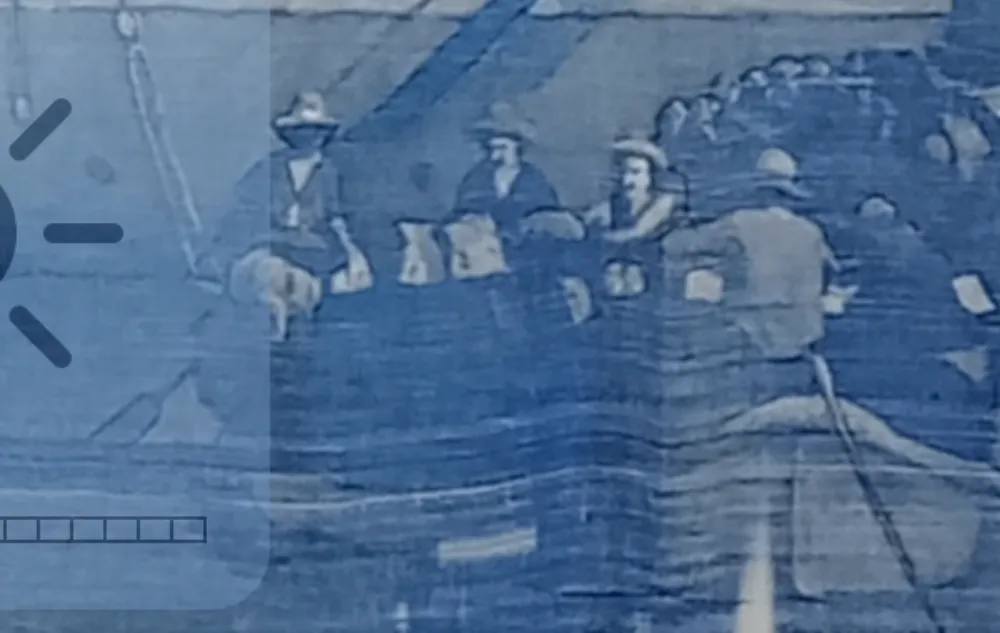
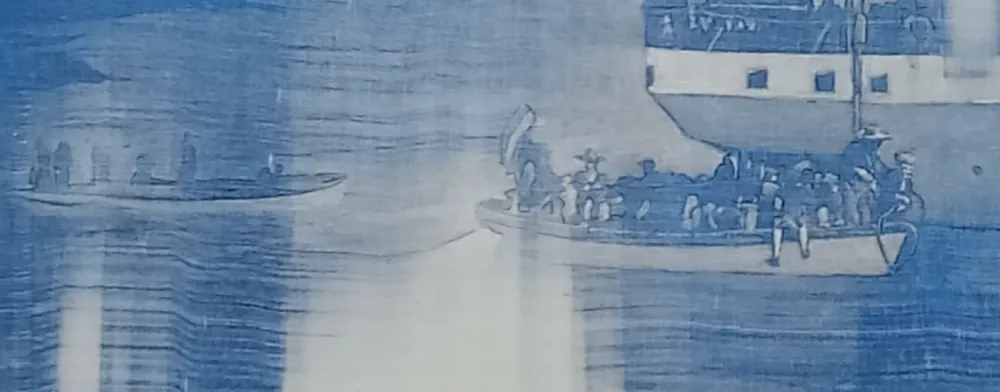

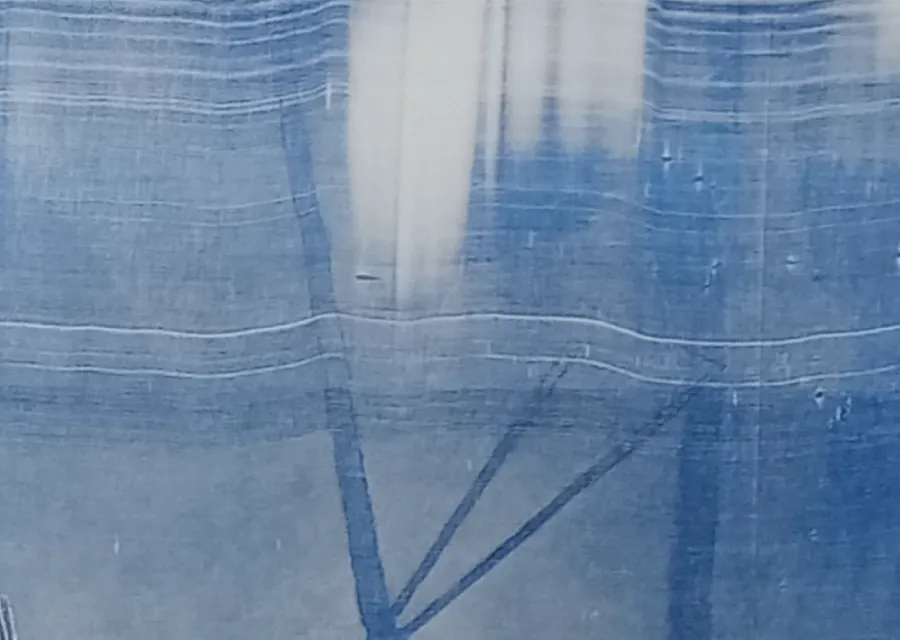
Mangu Putra’s portrayal of a moment in the timeline of colonial intervention is a powerful composition infused with intrigue. The work contrasts abstract with representational painting and static motion with dynamic movement, creating a visual tension that is both compelling and thought-provoking. The dialogue between darker and lighter colours adds to the painting’s power. Its suggestive qualities invite investigation into the possibilities it presents, including events on that day in September 1906 and subjects such as Balinese and Western ideologies, power and submission, and, ultimately, life and death.
Sanur, 1906 represents a clash of opposing universal forces – positive and negative, akin to the Yin and Yang. These forces symbolize the natural internal and external conditions that shape the human experience. The Balinese philosophy of Rwa Bhineda prevails within the painting. The Balinese believe that two opposing forces are required to maintain universal balance.
The composition is intentionally blurry and its meaning ambiguous. Mangu Putra aims to highlight this quality, mirroring the unclear nature of much of Bali’s history.
Mangu Putra, was born in Sangeh, Central Bali in 1963. He is an award-winning artist who has exhibited internationally to critical acclaim. His objective is to offer the audience images with open-ended meanings that do not make defining statements yet prompt our imagination to think, question, seek out possibilities and begin conversations. Mangu Putra opens the door to the past to create a brighter future.
For more, follow Mangu Putra on Instagram: @mangu_putra





